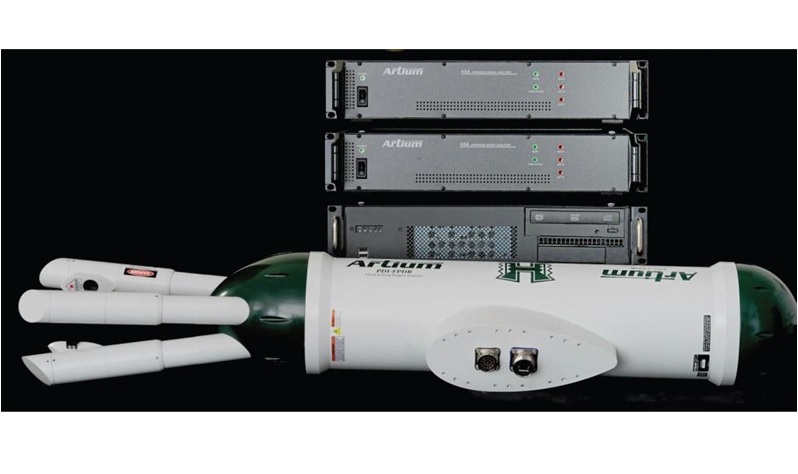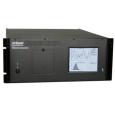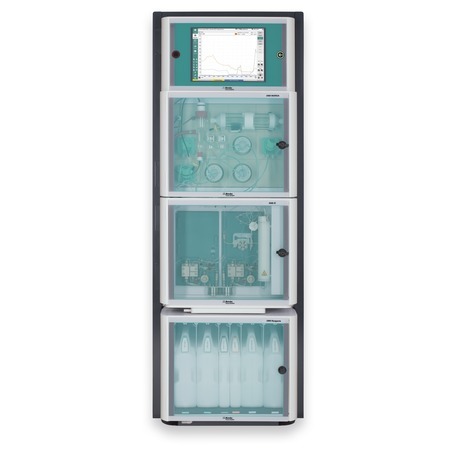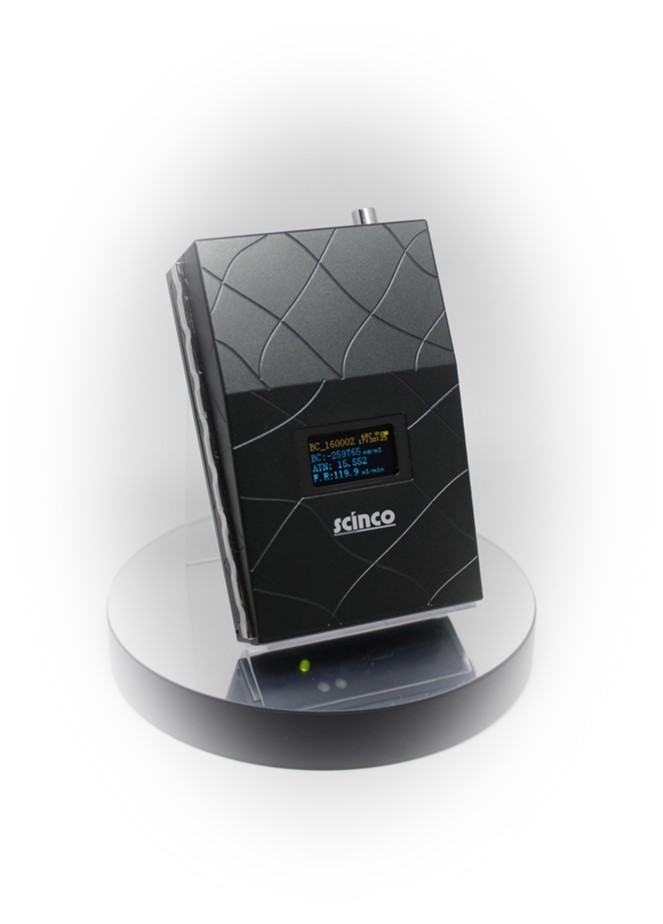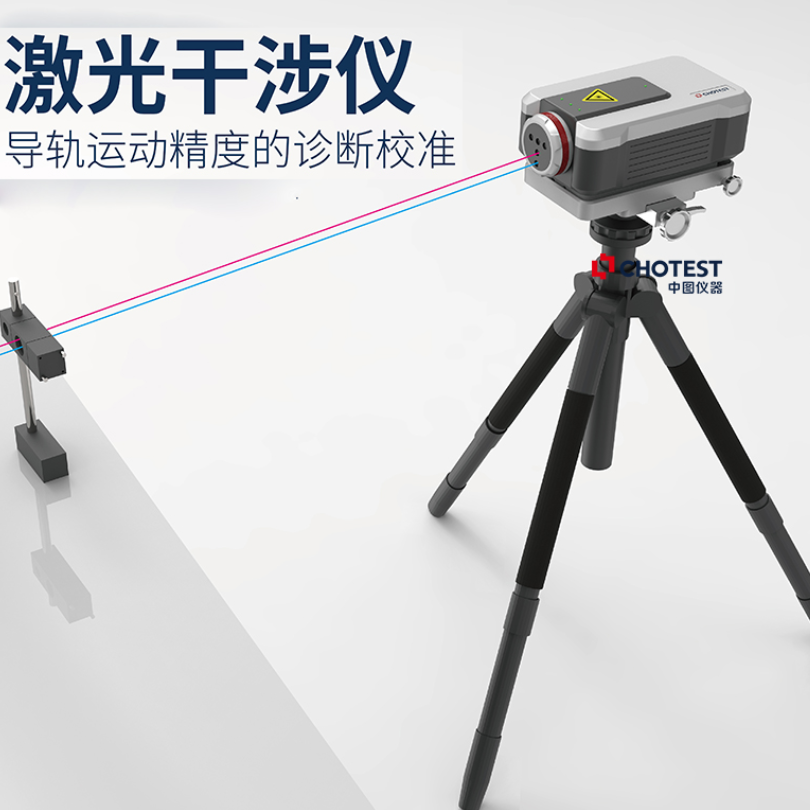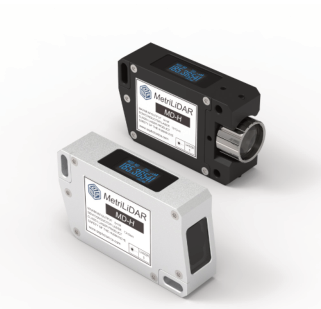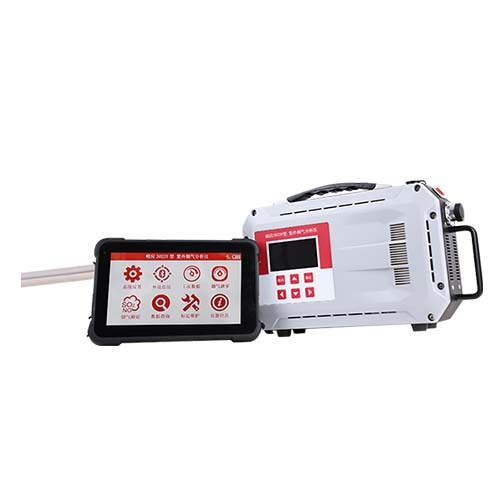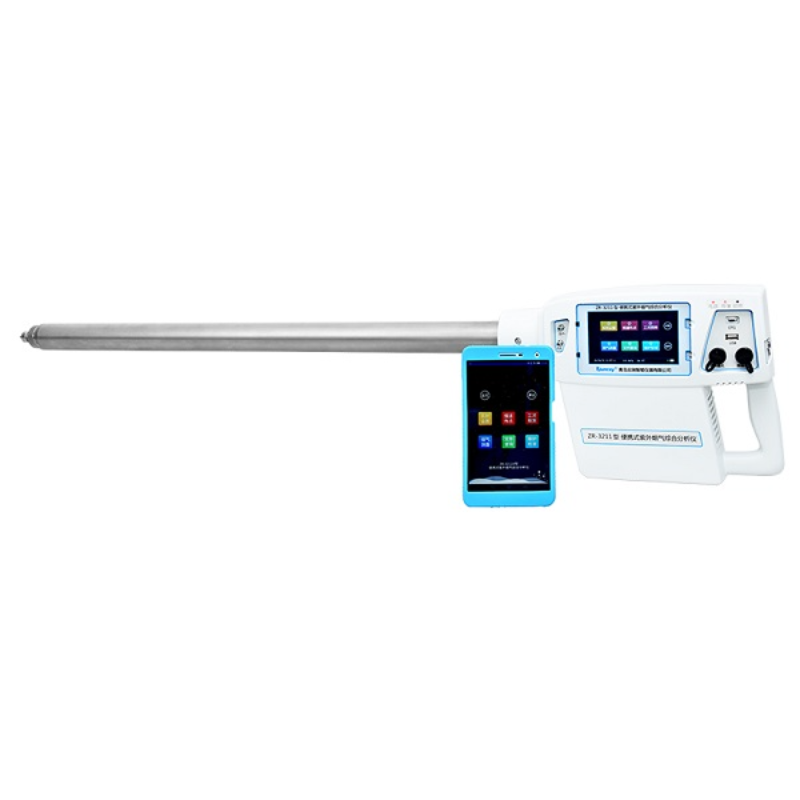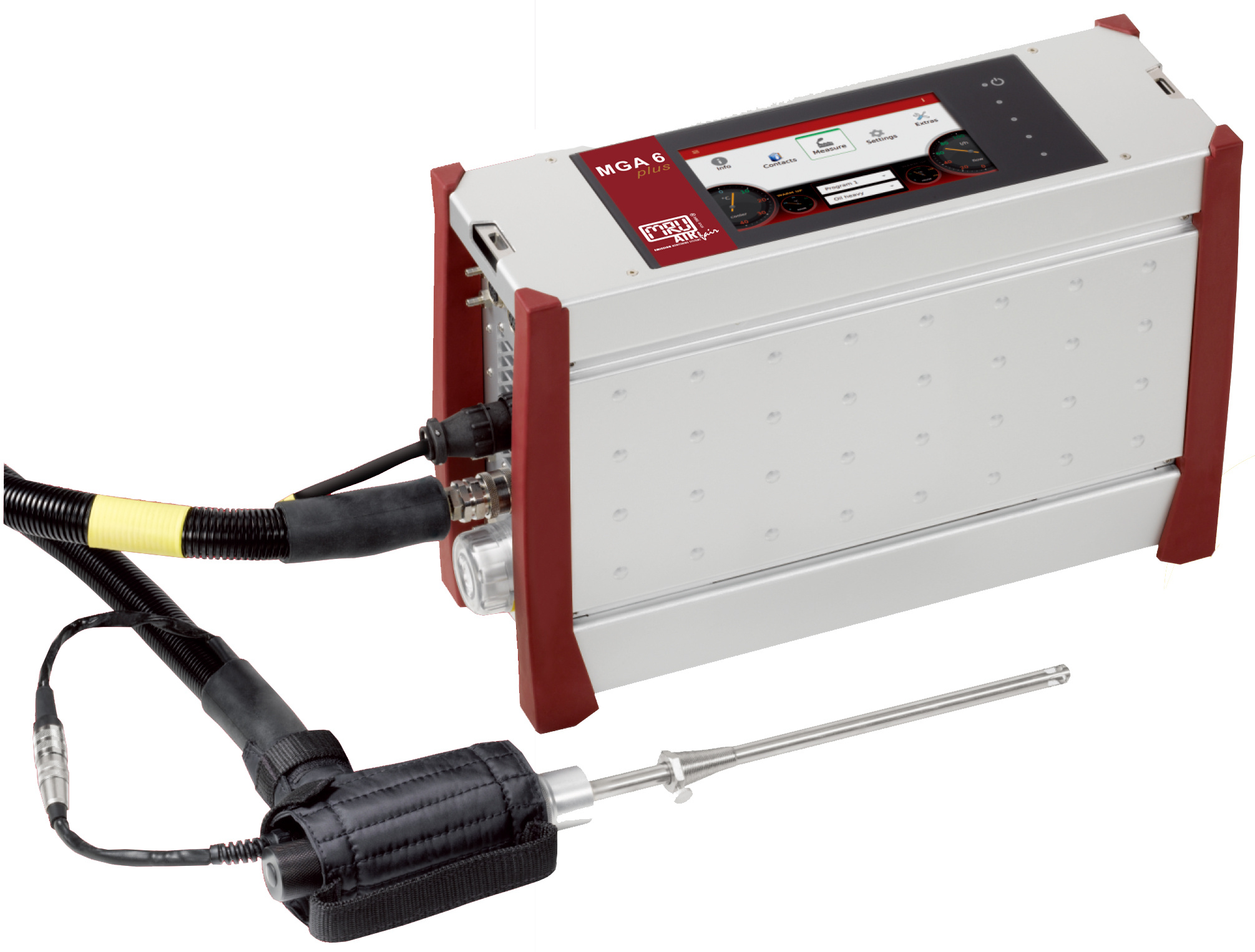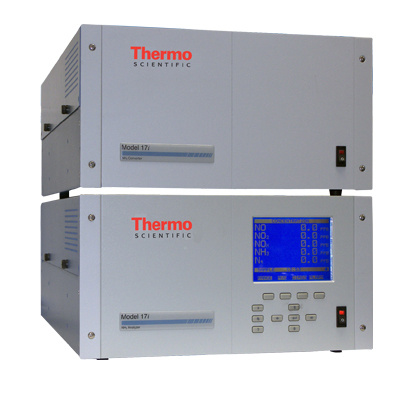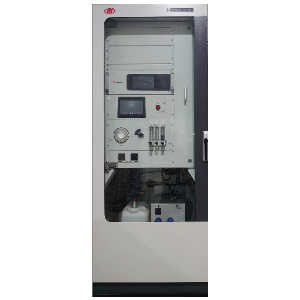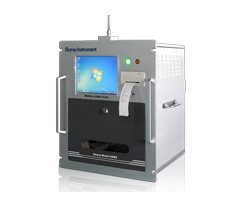方案详情
文
The ability of airborne particles to take up water may be
enhanced by surface-active components, but the importance
of this effect is controversial because direct measurement of
the surface tension of microscopic droplets has not been possible.
Here we infer droplet surface tension from water
uptake measurements of mixed organic-inorganic particles
at relative humidities just below saturation (99.3–99.9%).
The surface tension of droplets formed on particles composed
of NaCl and a-pinene ozonolysis products was
reduced by 50–75%, but only when enough organic material
was present to form a film on the droplet surface at least
0.8 nm thick. This study suggests that if atmospheric particles
are predominantly (?80%) composed of surface-active
material, their influence on cloud properties and thus climate
could be enhanced, and their atmospheric lifetimes could be
reduced. Citation: Ruehl, C. R., P. Y. Chuang, A. Nenes, C. D.
Cappa, K. R. Kolesar, and A. H. Goldstein (2012), Strong evidence
of surface tension reduction in microscopic aqueous droplets,
方案详情

GEOPHYSICAL RESEARCH LETTERS, VOL. 39,L23801, doi:10.1029/2012GL053706, 2012 L23801RUEHL ET AL.: MICROSCOPIC SURFACE TENSIONL23801 Strong evidence of surface tension reduction in microscopicaqueous droplets C. R. Ruehl, P. Y. Chuang,A. Nenes, C. D. Cappa, K. R. Kolesar,and A. H. Goldstein' Received 27 August 2012; revised 18 October 2012; accepted 20 October 2012; published 1 December 2012. [i] The ability of airborne particles to take up water may beenhanced by surface-active components, but the importanceof this effect is controversial because direct measurement ofthe surface tension of microscopic droplets has not been pos-sible. Here we infer droplet surface tension from wateruptake measurements of mixed organic-inorganic particlesat relative humidities just below saturation (99.3-99.9%).The surface tension of droplets formed on particles com-posed of NaCl and a-pinene ozonolysis products wasreduced by 50-75%, but only when enough organic materialwas present to form a film on the droplet surface at least0.8 nm thick. This study suggests that if atmospheric parti-cles are predominantly (<80%) composed of surface-activematerial, their influence on cloud properties and thus climatecould be enhanced, and their atmospheric lifetimes could bereduced. Citation: Ruehl, C. R.,P. Y. Chuang, A. Nenes, C. D.Cappa, K. R. Kolesar, and A. H. Goldstein (2012), Strong evidenceof surface tension reduction in microscopic aqueous droplets,Geophys. Res. Lett., 39, L23801, doi:10.1029/2012GL053706. 1. Introduction [2] If two airborne particles with the same dry diameter(Dary) are in equilibrium with ambient relative humidity(RH), the more hygroscopic of the two will have a greaterwet diameter (Dwet). It will therefore scatter more light, actas a greater condensational sink for soluble compounds,andmore readily act as a cloud condensation nucleus (CCN).Since wet deposition is the dominant process removingsubmicron particles from the atmosphere [Textor et al.,2006], and the chemistry of dilute cloud droplets is distinctfrom that of aerosol particles [Ervens et al., 2011], an aero-sol’s hygroscopicity largely determines its chemical evolu-tion, its lifetime and atmospheric burden, and hence itsinfluence on air quality and climate. [3] Particle hygroscopicity under supersaturated (“CCN”)conditions is often greater than predicted from subsaturated ( Department o f En vironmental Sc ience, P olicy, and M anagement,University of California, Berkeley, California , USA. ) ( Earth and P l anetary S c iences D e partment, Un i versity of Ca l ifornia,Santa Cruz, California, USA. ) ( School of Earth and Atmospheric Sciences, and Chemical & BiomolecularEngineering, Georgia Institute of Technology, Atlanta, Georgia, USA. ) ( “Department o f Civil a n d E n vironmental Engineering, University of California, Davis, California, USA. ) ( Corresponding author: C . R. Ruehl, D e partment of EnvironmentalScience, P olicy, and Management, Un i versity of California, 1 3 0 Mulford Hall 3114, Berkeley, CA 94720-3114, U S A. (c r uehl@berkeley.edu) ) ( Published in 2012 by the American Geophysical Union. ) water uptake measurements (typically at RH ≤ 90%). Sev-eral explanations for this behavior have been discussed inthe literature, including reductions in droplet surface tension(a [e.g., Dinar et al., 2007; Asa-Awuku et al., 2008;Ovadnevaite et al., 2011]). Currently no known method candirectly measure o of microscopic (Dwet ~1 um) droplets.Thus while many studies have shown that atmosphericorganic matter can reduce a of macroscopic aqueous solu-tions [Facchini et al., 1999;Dinar et al., 2006; Asa-Awukuet al., 2008], conclusive evidence of reduced a in micro-scopic droplets has been elusive [Abbatt et al., 2005]. The ovalues of microscopic droplets and macroscopic solutionsmay differ because surface area to volume ratios are severalorders of magnitude greater in the former. This tends toreduce surface excess concentrations of surface-activecompounds, potentially inhibiting a reduction relative tomacroscopic solutions. Furthermore, for soluble surfactants,surface partitioning reduces bulk solute concentration, rais-ing water activity and thus decreasing hygroscopicity[Sorjamaa et al., 2004]. It may therefore be inappropriate toapply macroscopic o to microscopic droplets. [4] Although o in microscopic droplets cannot be directlymeasured, it can be inferred from measurements of droplethygroscopicity, which is determined by two components:(1) the Kelvin effect, which is the increase in equilibriumwater vapor pressure over a curved surfacec,e .and is propor-tional to o; and (2) the Raoult effect, which is the reduction inwater activity associated with solute dissolution, and does notexplicitly depend on o. Such an inference requires that thesetwo effects can be separated, and that the measurements aresensitive to o. Previously, o has been inferred from mea-surements of CCN activity. However, for an aerosol of agiven composition, such a measurement involves only asingle independent variable- either the critical supersatura-tion or Ddry at the point of cloud droplet activation. Thus anyenhanced CCN activity cannot be unambiguously attributedto reduced o, as it could also be caused by an increasedRaoult effect. Subsaturated hygroscopicity experimentsallow for two independent variables (RH and or Dary), but theKelvin effect is negligible at RH < 95%, and thus hygro-scopicity is dominated by the Raoult effect. Since RH>95%is difficult to maintain accurately in most experimental set-ups, most previous observations of subsaturated hygroscopicgrowth have not been sensitive to o. [s] These issues likely have contributed to disagreementsamong previous studies regarding the role of reduced o indetermining CCN activity, with some studies concludingthat the CCN activity of surfactants is overestimated unlesssurface partitioning is taken into account [Li et al., 1998;Sorjamaa and Laaksonen, 2006; Prisle et al., 2010],whileothers have found that organic CCN activity can only be Table 1. Summary of High-RH Hygroscopicity Measurements(Excluding Those in Figure 2) Composition° 11 Dary (m) RH (%) fsoA Ktot Korg KCCN SOA 00(.350-0.650 99.60-99.84 0.026 00.026 9SOA:1NaCl 0.215-0.36699.87-99.870.90 0.72 0.66 7SOA:1NaCl 100.176-0.52599.71-99.92 0.88 0.52 0.41 0.12 4SOA:1NaC1 0.222-0.29199.81-99.87 0.80 0.72 0.59 2SOA:1NaCl 22 0 220.144-0.288 99.71-99.92 0.22 -0.30 0.13 “SOA=a-pinene ozonolysis SOA. accurately predicted if o is reduced to values similar tomacroscopic solutions [Dinar et al., 2006; Broekhuizenet al., 2004; Asa-Awuku et al., 2008; Moore et al., 2008].Another set of studies have concluded that only slightreductions in a (~10-15%) are most consistent withobserved CCN activity [Engelhart et al., 2008; Wex et al.,2009; King et al., 2009;Duplissy et al., 2008; Padro et al.,2010; Asa-Awuku et al.,2010]. [6] Here we report measurements of equilibrium wateruptake at high but subsaturated RH (99.2 to 99.9%), tounambiguously determine if o can be reduced in micro-scopic droplets. This is possible because measurements overthis RH range allow for clear separation of the Kelvin andRaoult effects. These measurements are relevant to CCNactivity because the water activity of the droplets is similarto that of typical atmospheric CCN at the point of activation.Our experiments utilize particles generated via dark ozono-lysis of a-pinene because they mimic the complexity ofambient organic aerosols, and because a-pinene is animportant precursor of ambient secondary organic aerosol(SOA). We address the following questions: [7] 1. Do we see evidence of o reduction in microscopicdroplets at RH near 100%? If so, to what extent? [8] 2. How much surface-active material is required toachieve any such reductions in o? [9] 3. Under what conditions might reduced o increase theCCN activity of aerosols? 2. Experiment [10] Reagent grade (>99% purity, VWR International)NaCl was dissolved in ultrapure water (resistivity ≥18.2 MQcm) and used in a constant-output atomizer (TSI, model3079) followed by a diffusion drier (output RH< 10%) togenerate seed particles. SOA particles were generated bydark ozonolysis of a-pinene, either via homogeneousnucleation or condensation onto NaCl seed particles. Noradical scavenger was used. Ozone was produced with a Hgpenray lamp and diluted with a dry nitrogen flow to a con-centration of either 350 ppb for seed experiments, or560 ppb for homogeneous nucleation. The larger [O3] in thehomogeneous nucleation experiments was necessary toensure that droplets were large enough to measure. Liquido-pinene was delivered via a syringe pump into a drynitrogen flow, at a rate ensuring that O3 was the limitingreagent. The a-pinene and Os reacted to form SOA in asmall stainless steel reaction chamber with a residence timeof approximately 30 s. For the mixed SOA-NaCl particles,the SOA volume fractions were determined from the mea-sured dry particle diameters of the pure NaCl and mixedparticles. For inorganic particles, shape correction factors of)f1.08 for NaCl and 1.04 for AS was applied. For pure organic or mixed organic-inorganic particles, no shape correctionfactor was used [Zelenyuk et al., 2006]. [ii] High RHs just below (99.3-99.9%) and just above(100.2-100.6%) saturation were generated with a continu-ous-flow streamwise thermal gradient chamber based on thedesign of Roberts and Nenes [2005] and described in detailpreviously [Ruehl et al.,2010]. The flow rate in the chamberwas fixed at 0.82 lpm, resulting in a residence time of ~12 s.Before exiting the chamber, and while still flowing along thechamber centerline, droplets were counted and sized with aphase Doppler interferometer (PDI; Artium, Inc.). [12] In subsaturated experiments, hygroscopicity is repor-ted as k [Petters and Kreidenweis, 2007]: where V is the molar volume of the water in the dropletsolution (assumed to be equal to that of pure water becausedroplets are very dilute when RH is near 100%), R is the gasconstant, and T is temperature. The largest source of exper-imental uncertainty is the RH in the chamber, as RH isextremely sensitive to T near saturation. The chamber T iscontrolled to within 0.01 K using high-precision thermistors,which corresponds to an uncertainty in RH of ±0.05%(absolute). All quoted uncertainty and error bars depicted inplots are those associated with the 0.01 K uncertainty in T,unless otherwise indicated. For CCN measurements, k isdetermined via measurement of the critical supersaturation(S), from the following relationship: where Dary,e is the dry diameter that activates at a given S.Both RH and S (for CCN experiments) were calibrated withpure AS particles, taking into account non-ideality [Roseet al.,2008]. 3. Results 3.1. Observed k Values [13] Under subsaturated conditions, k of pure secondaryorganic aerosol (rsoA) generated by ozonolysis of a-pineneranged from 0.011 to 0.042 (mean ±1o=0.026±0.010)(Table 1), increasing with RH (Figure Sla in the auxiliarylenal: inerasinematerial). This low value of U is consistent with Wexet al. [2009], who found that for a-pinene ozonolysis KSoA~ 0.02 at RH=99.6%. Such a low is also consistentmeasured DwetDary ratios less than 1.1 at 85% 80%, this point is not reached before the dropletsattain their equilibrium size at the minimum value of o.Therefore Dwet is limited by whatever minimum value of o ispossible. Overall, this behavior is more consistent with themodel of an insoluble surfactant; soluble surfactants wouldbe expected to have a much more gradual change in owith fsoA 3.3. Relationship to CCN Activation [20] The previous results describe droplets at equilibriumwith high RH (i.e., just below the critical supersaturation);next, we consider the minimum value of fso required for areduction to still be relevant at the point of CCN activation.The film thickness at this point is determined primarily byfsoA, but also varies with o and the hygroscopicity (Kinorg)ofthe non-surface-active fraction of the particle, as theseinfluence Dwet. If o and Kinorg at activation do not vary withDwet, then Dwer at activation is proportional to Dary [Lewis,2008]. Therefore, the droplet surface area at activation isproportional to the dry particle volume, and thus the assumedfilm thickness is independent of Dary. For reasonableassumptions of o and Kinorg, a film at least 0.8 nm thick willonly exist on an activating droplet if the dry particle iscomposed of at least ~80% SOA (Figure S2). [21] These theoretical predictionss are consistent withobservations of mixed SOA-NaCl CCN activity. Ktot derivedfrom these experiments for both 67% and 88%SOA-NaClparticles was relatively low (0.13 and 0.12, respectively),similar to Ktot of 67% SOA:NaCl particles at high but sub-saturated RH (Table 1). Because NaCl is so hygroscopic, afilm on an organic-NaCl particle will be thicker than 0.8 nmat activation only if fsoa> 0.9 (Figure S2). [22] Finally, unlike water uptake measurements made atlower RH, these experiments are directly applicable tosupersturated conditions. This is because aw is similar towhat would be expected for smaller (dry) particles at thepoint of CCN activation. Specifically, aw of the solution droplets in Figure 2 ranges from 0.997 to 0.999, and aw ofdroplets formed on sure pure SOA particles was at least0.998 (Figure S1b). Because Kohler theory predicts that theKelvin effect is three times the magnitude of the Raoulteffect at activation, an activating CCN with aw=0.998 (i.e.,reduced from pure water by 0.2%) would have a Kelvineffect that increases the equilibrium RH by 0.6%. It wouldthus have a S。=0.4%, a fairly typical value for atmo-spheric CCN. 4.Conclusions [23] This study presents strong evidence that surfacetension reduction can occur in microscopic droplets andaugment their hygroscopicity. Low water uptake wasobserved for pure SOA formed via a-pinene ozonolysis(s0A=0.026±0.010), even at high RH (99.7-99.9%).The SOA was much more hygroscopic (Ksoa ~0.4) wheninternally mixed with NaCl, which is attributed to a~75%reduction in surface tension.This only occurred, however, ifenough SOA was present to form a surface layer with aminimum thickness of about 0.8 nm on the wet droplet. Ourresults suggest that only particles that are predominantly(i.e.,280%) composed of surface-active material will havefilms sufficiently thick to experience enhanced CCN activ-ity due to o reduction. [24] Acknowledgments. This work was supported by the NationalAeronautics and Space Administration Atmospheric Radiation Programand the National Science Foundation grant ATM-0837913. [25] The Editor thanks two anonymous reviewers for their assistance inevaluating this paper. References Abbatt, J. P. D., K. Broekhuizen, and P. P. Kumal (2005), Cloud con-densation nucleus activity of internally mixed ammonium sulfate/organicacid aerosol particles, Atmos. Environ.,39(26),4767-4778, doi:10.1016/i.atmosenv.2005.04.029. Asa-Awuku, A., A. P. Sullivan, C. J. Hennigan, R. J. Weber, and A. Nenes(2008), Investigation of molar volume and surfactant characteristics ofwater-soluble organic compounds in biomass burning aerosol, Atmos.Chem. Phys.,8(4), 799-812. Asa-Awuku, A., A. Nenes, S. Gao, R. C. Flagan, and J. H. Seinfeld (2010),Water-soluble soa from alkene ozonolysis: Composition and droplet acti-vation kinetics inferences from analysis of CCN activity, Atmos. Chem.Phys., 10(4), 1585-1597, doi:10.5194/acp-10-1585-2010. Broekhuizen, K., P. P. Kumar, and J. P. D. Abbatt (2004), Partially sol-uble organics as cloud condensation nuclei: Role of trace soluble andsurface active species, Geophys. Res. Lett., 31,L01107, doi:10.1029/2003GL018203. Dinar, E., I. Taraniuk, E. R. Graber, S. Katsman, T. Moise, T. Anttila,T. F. Mentel, andY. Rudich (2006), Cloud condensation nuclei propertiesof model and atmospheric HULIS, Atmos. Chem. Phys., 6,2465-2481. Dinar, E., I. Taraniuk, E. R. Graber, T. Anttila, T. F. Mentel, and Y. Rudich(2007), Hygroscopic growth of atmospheric and model humic-like sub-stances, J. Geophys. Res.,112, D05211, doi:10.1029/2006JD007442. Duplissy, J., et al. (2008), Cloud forming potential of secondary organicaerosol under near atmospheric conditions, Geophys. Res. Lett., 35,L03818, doi:10.1029/2007GL031075. Eastoe, J., and J. S. Dalton (2000), Dynamic surface tension and adsorp-tion mechanisms of surfactants at the air-water interface, Adv. ColloidInterface Sci., 85(2-3), 103-144, doi:10.1016/S0001-8686(99)00017-2. Engelhart, G. J., A. Asa-Awuku, A. Nenes, and S. N. Pandis (2008), CCNactivity and droplet growth kinetics of fresh and aged monoterpenesecondary organic aerosol, Atmos. Chem. Phys., 8(14), 3937-3949. Ervens, B., B. J. Turpin, and R. J. Weber (2011), Secondary organicaerosol formation in cloud droplets and aqueous particles (aqSOA):A review of laboratory, field and model studies, Atmos. Chem. Phys.,11, 11,069-11,102, doi:10.5194/acp-11-11069-2011. Facchini, M., M. Mircea, S. Fuzzi, and R. Charlson (1999), Cloud albedoenhancement by surface-active organic solutes in growing droplets,nature,401(6750),257-259. ( King, S . M., T. Rosenoern, J . E . Shilling, Q. Chen, and S. T. Martin (2009), Increased c loud activation p otential o f s econdary organic aerosol foratmospheric m ass loadings, Atmos. C hem. Phys., 9(9), 2 959-2 9 71,doi:10.5194/acp-9-2959-2009. ) ( Lewis, E. R . (2008), An examination of Kohler theory resulting in an accu- r ate expression for the equilibrium ra d ius ratio of a hy g roscopic aerosol particle valid up to and including relative humidity 1 00%, J. G eophys. R es., 113,D03205, doi:10.1029/2007JD008590. ) ( Li, Z., A. Williams, and M. Rood (1998), Influence of soluble surfactantproperties on t he activation o f aerosol p a rticles c ontaining inorganic solute, J. Atmos. S ci., 55(10), 1859-1866. ) ( Moore, R. H . , E . D . I n gall, A . Sorooshian, a n d A. Ne n es (20 0 8), Mol a r mass, s urface tension, and droplet growth k inetics of marine organicsfrom measurements of CCN act i vity, Ge o phys. Re s . Le t t., 3 5 , L 0 7801,doi:10.1029/2008GL033350. ) ( Ovadnevaite, J ., D. Ceburnis, G. M a rtucci, J. Bialek, C . M o nahan,M. R inaldi, M. C . Facchini, H . B erresheim, D . R. W o rsnop, a n dC. O 'Dowd (2011) , P r imary m a rine o r ganic aerosol: A dichotomy of l ow h ygroscopicity and h i gh CCN activity, Ge o phys. Res . Lett., 38, L21806, doi:10.1029/2011GL048869. ) ( Padr6, L . T ., D . T kacik, T . L a them, C. J. Hennigan, A. P. S ul l ivan, R . J . Weber, L. G. Huey, and A. Nenes (2010), Investigation of c loudcondensation n uclei properties and droplet growth k inetics of thewater-soluble aerosol fraction in Mexico C ity, J. Geophys. R es., 1 15,D09204, doi:10.1029/2009JD013195. ) ( Petters, M. D., and S. M. K reidenweis (2007), A si n gle parameter represen-tation of hygroscopic g rowth a n d cloud co n densation nuc l eus activity,Atmos. Chem. Phys.,7(8) , 1961-1971. ) ( Prenni, A. J., M. D . P etters, S. M. K reidenweis, P . J . DeMott, an d P. J.Ziemann (2007), Cl o ud dro p let act i vation of secondary orga n ic aerosol,J. Geophys. Res., 112, D10223, d oi: 1 0.1029/2006JD007963. ) ( Prisle, N. L., T. Raatikainen, A. Laaksonen, a n d M. Bilde (2010), Surfac-tants in c loud d roplet a ctivation: Mixed o r ganic-inorganic p a rticles,Atmos. Chem. Phys.,10(12), 5663-5683,doi:10.5194/acp-10-5663-2010. ) ( R oberts, G . C ., and A . Nenes (2005), A co n tinuous-flow streamwise ther-mal-gradient CCN c h amber for at m ospheric me a surements, Ae r osol Sci. Technol., 39(3), 206 - 221, doi:10.1080/027868290913988. ) ( R ose,D . ,S.S. Gunthe, E. M i khailov, G. P. Frank, U. Dusek,M . O. An d reae, and U . Poschl ( 2 008), Calibration a n d me a surement unce r tainties of acontinuous-flow cloud condensation nucle i counter (DMT-CCNC):CCN activation o f ammonium sulfate and sod i um chlo r ide aero s ol parti-cles in theory and e xperiment, Atmos. C hem. P h ys., 8 ( 5), 1 1 53-117 9 ,doi:10.5194/acp-8-1153-2008. ) Ruehl, C. R., P. Y. Chuang, and A. Nenes (2010), Aerosol hygroscopicityat high (99 to 100%) relative humidities, Atmos. Chem. Phys., 10(3),1329-1344, doi:10.5194/acp-10-1329-2010. ( S orjamaa, R., and A. L aaksonen ( 2 006), The influence o f surfactant proper-ties on critical supersaturations of cloud condensation n uclei, J. A erosol Sci., 37(12), 1 730-1736, doi:10.1016/j.jaerosci.2006.07.004. ) Sorjamaa,R., B. Svenningsson, T. Raatikainen, S. Henning, M. Bilde, andA. Laaksonen (2004), The role of surfactants in Kohler theory reconsid-ered, Atmos. Chem. Phys.,4, 2107-2117. Stokes, R. H., and R. A. Robinson (1966), Interactions in aqueous nonelec-trolyte solutions. I. Solute-solvent equilibria, J. Phys. Chem., 70(7),2126-2131, doi:10.1021/j100879a010. Textor, C., et al. (2006), Analysis and quantification of the diversities ofaerosol life cycles within AeroCom, Atmos. Chem. Phys., 6, 1777-1813. Vaden, T. D., C. Song, R. A. Zaveri, D. Imre, and A. Zelenyuk (2010),Morphology of mixed primary and secondary organic particles and theadsorption of spectator organic gases during aerosol formation, Proc.Natl. Acad. Sci. U. S. A., 107, 6658-6663. ( Wex, H., e t a l. (2009), Towards closing the gap between hygroscopic growth a nd activation for secondary organic aerosol: Pa r t 1 —Evidencefrom measurements, A t mos. Chem.Phys., 9 (12), 33987-3997doi:10.5194/acp-9-3987-2009. ) ( Zelenyuk, A . , Y . Cai, and D . I m re (2006), From agglomerates of spheres toirregularly shaped p articles: Determination o f dynamic sh a pe fac t orsfrom measurements of m o bility a nd vacuum aerodynamic di a meters, Aerosol Sci. Technol.,40,197 - 217, doi:10.1080/02786820500529406. ) This paper is not subject to U.S. copyright.L of of
确定
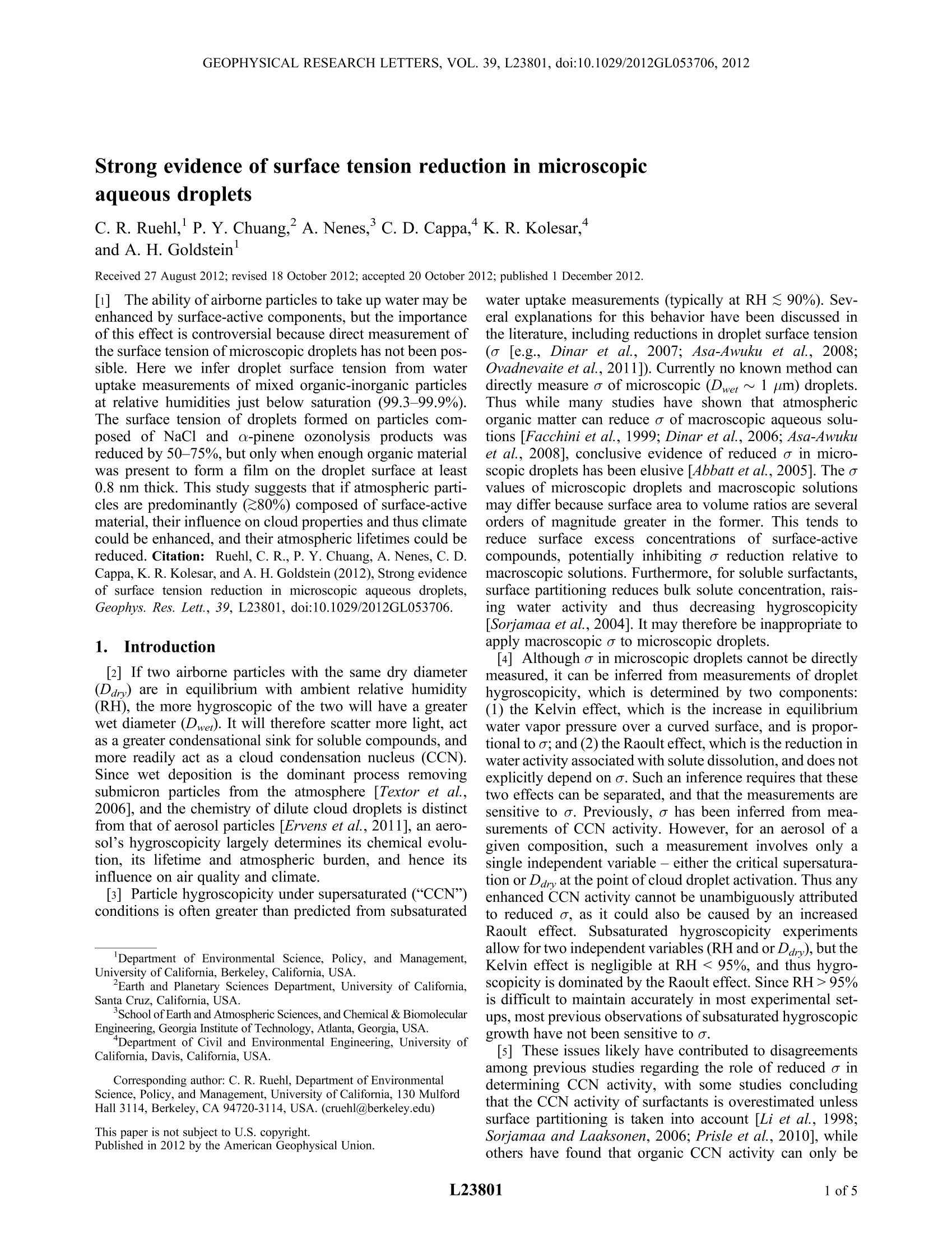
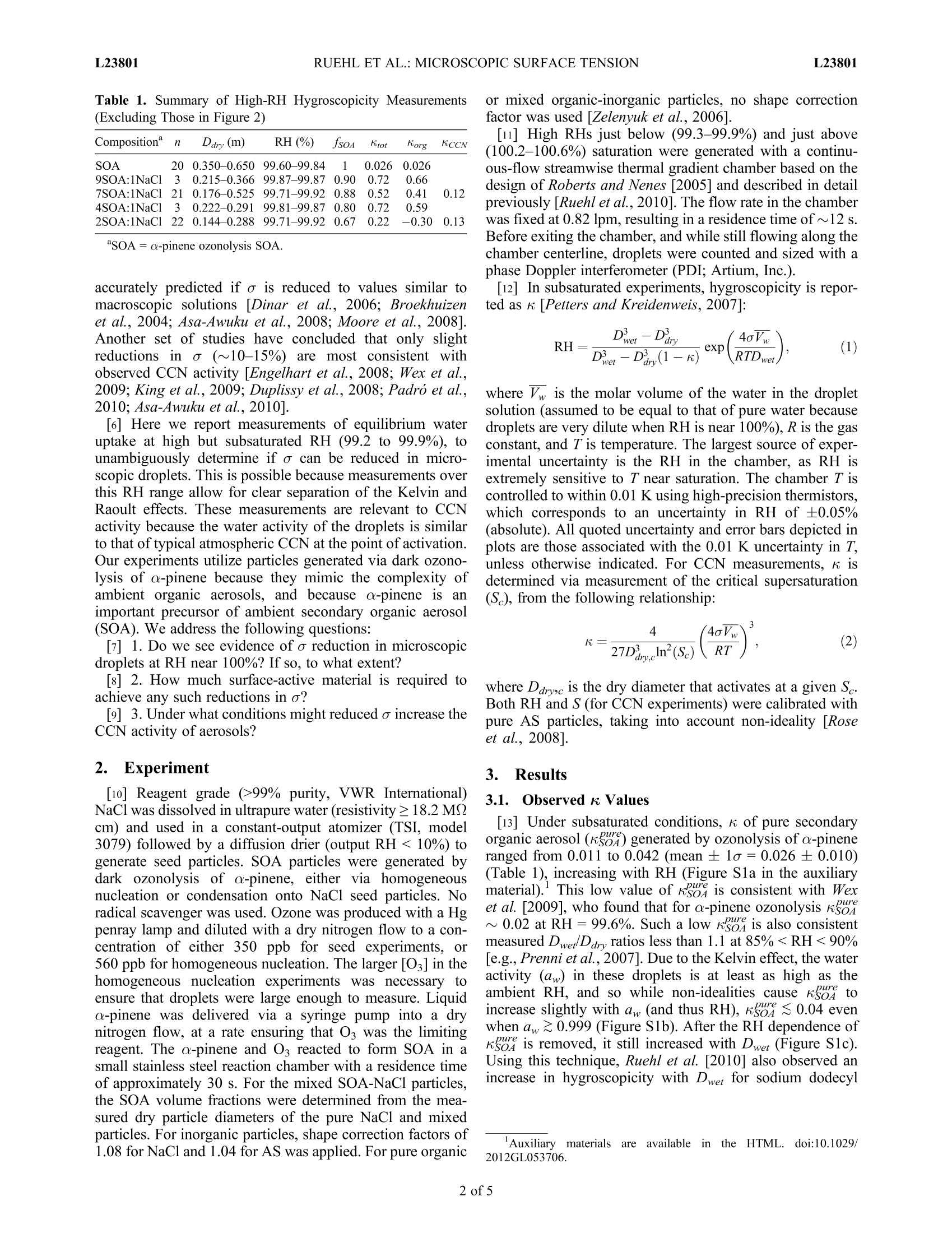
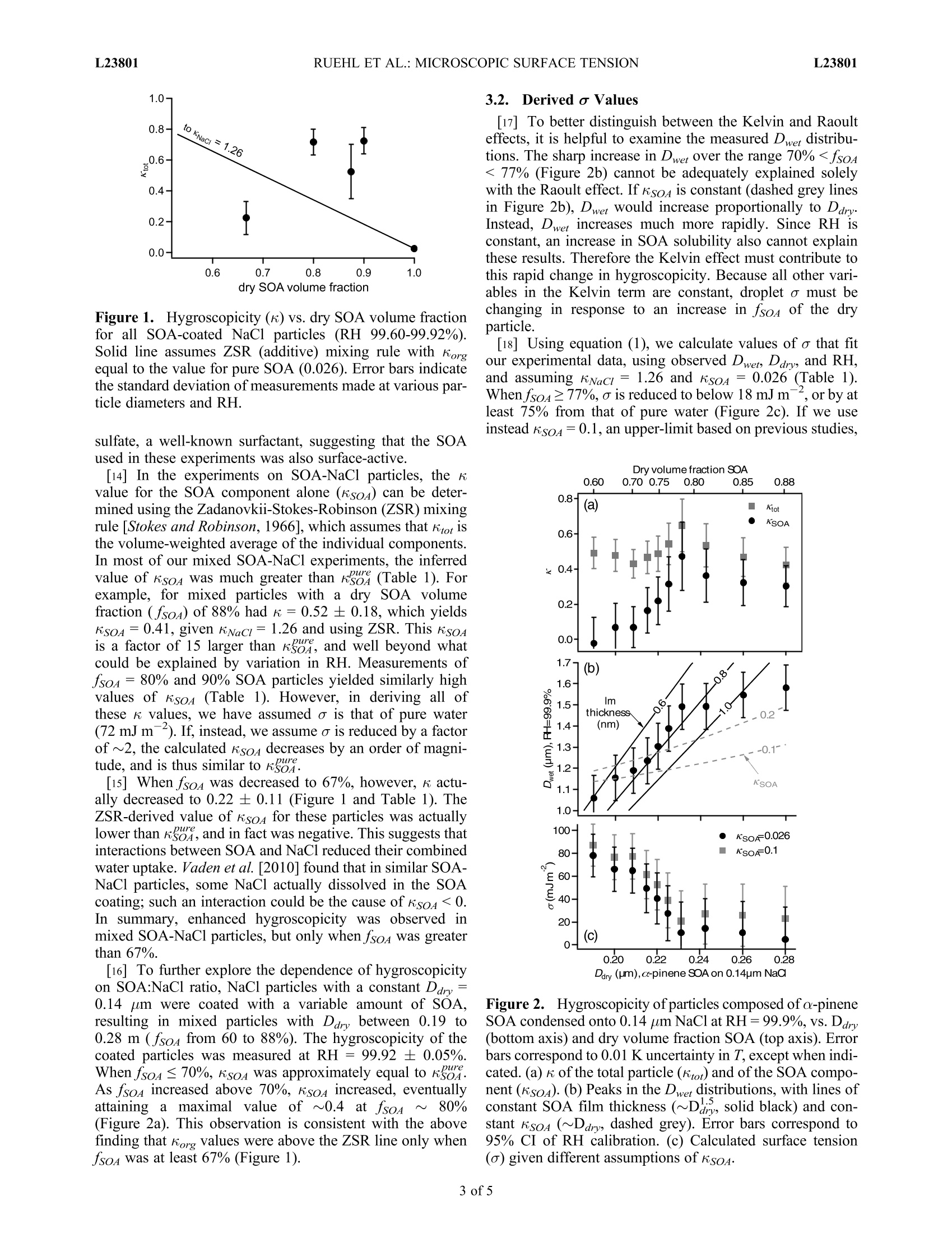
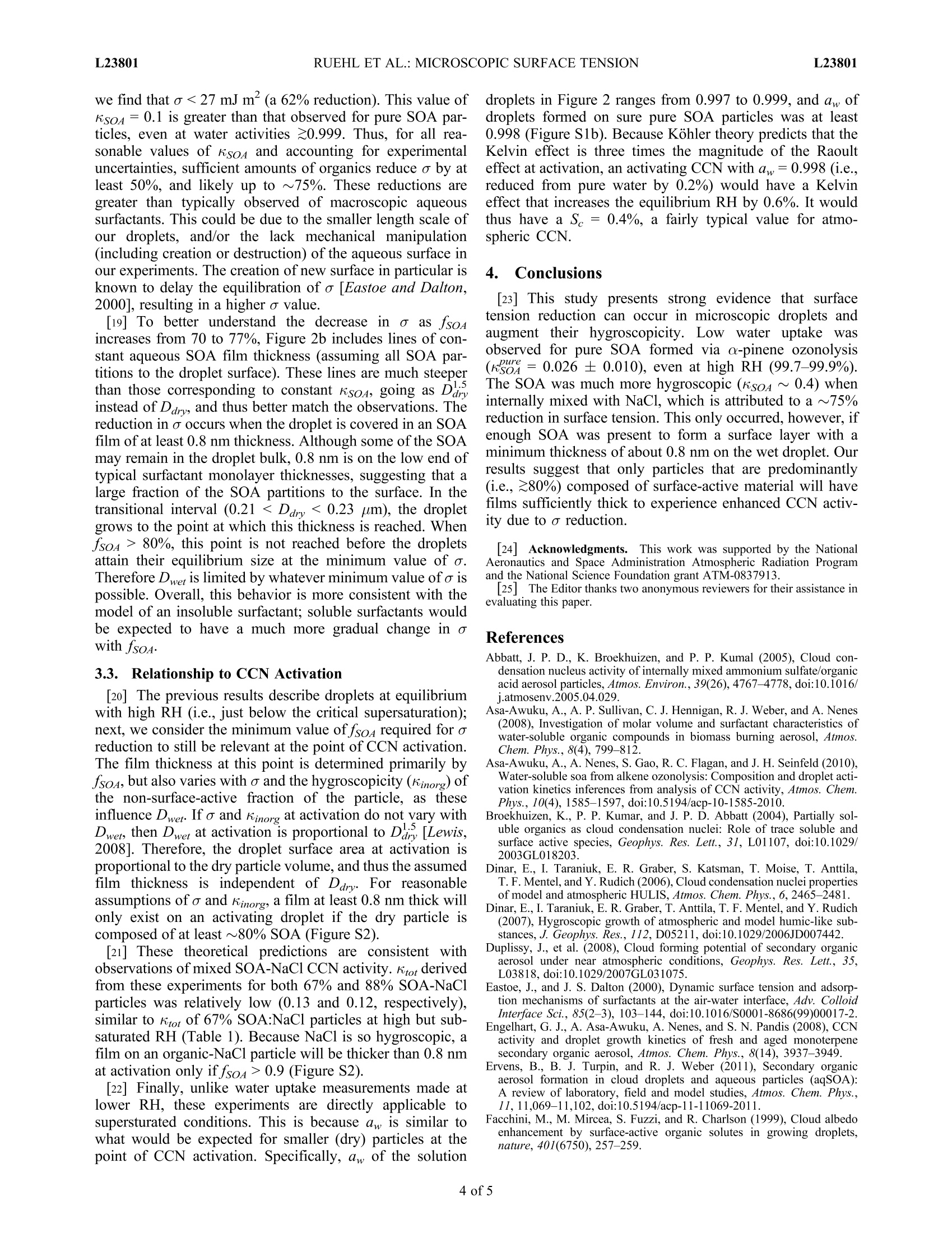
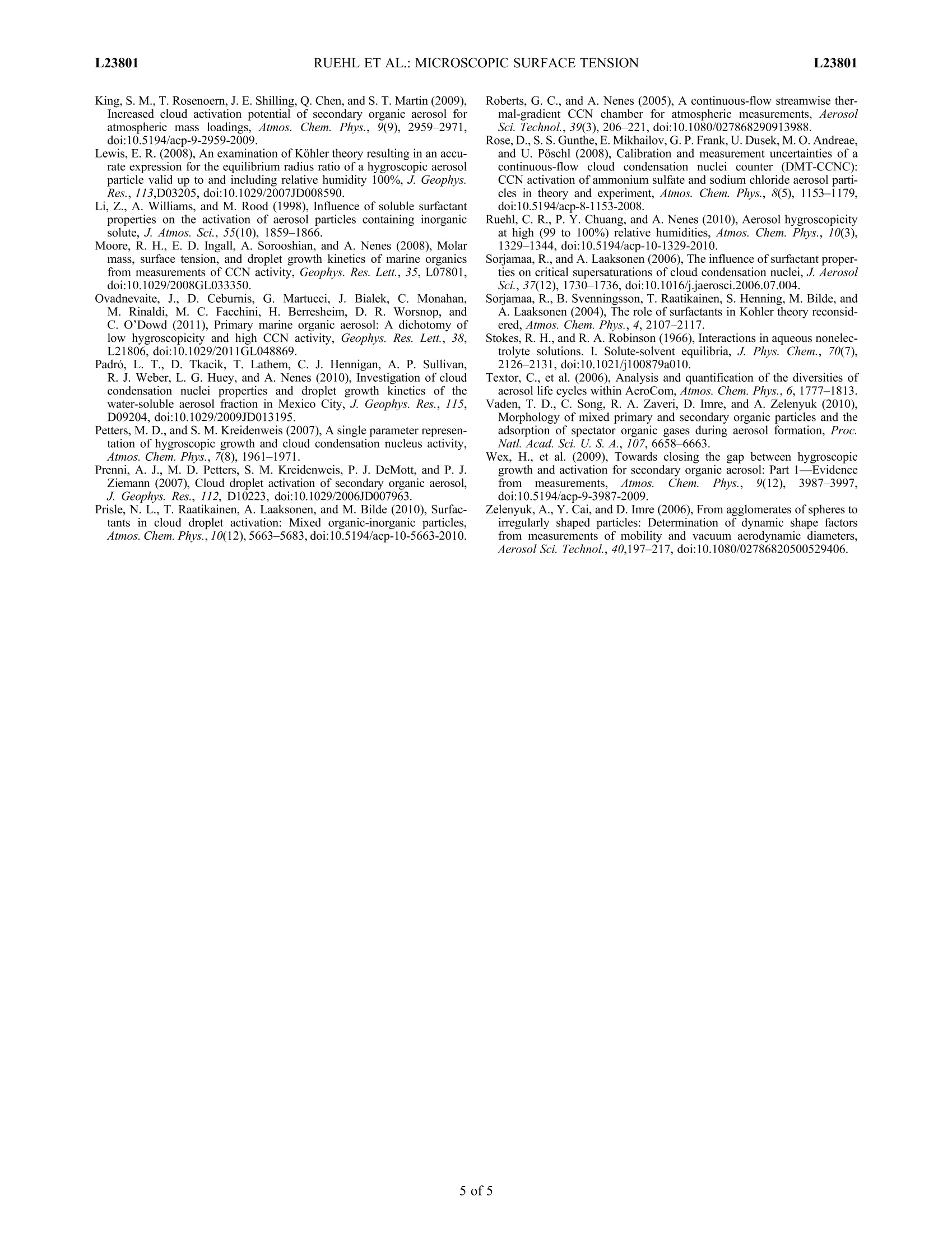
还剩3页未读,是否继续阅读?
北京欧兰科技发展有限公司为您提供《微观水滴中表面张力,液滴粒径,液滴速度检测方案(气溶胶)》,该方案主要用于其他中表面张力,液滴粒径,液滴速度检测,参考标准--,《微观水滴中表面张力,液滴粒径,液滴速度检测方案(气溶胶)》用到的仪器有Artium PDI-FP 双量程可机载飞行探头、激光相位多普勒干涉仪LDV,PDI,PDPA,PDA、激光诱导白炽光(LII)烟气分析仪
推荐专场
相关方案
更多
该厂商其他方案
更多

